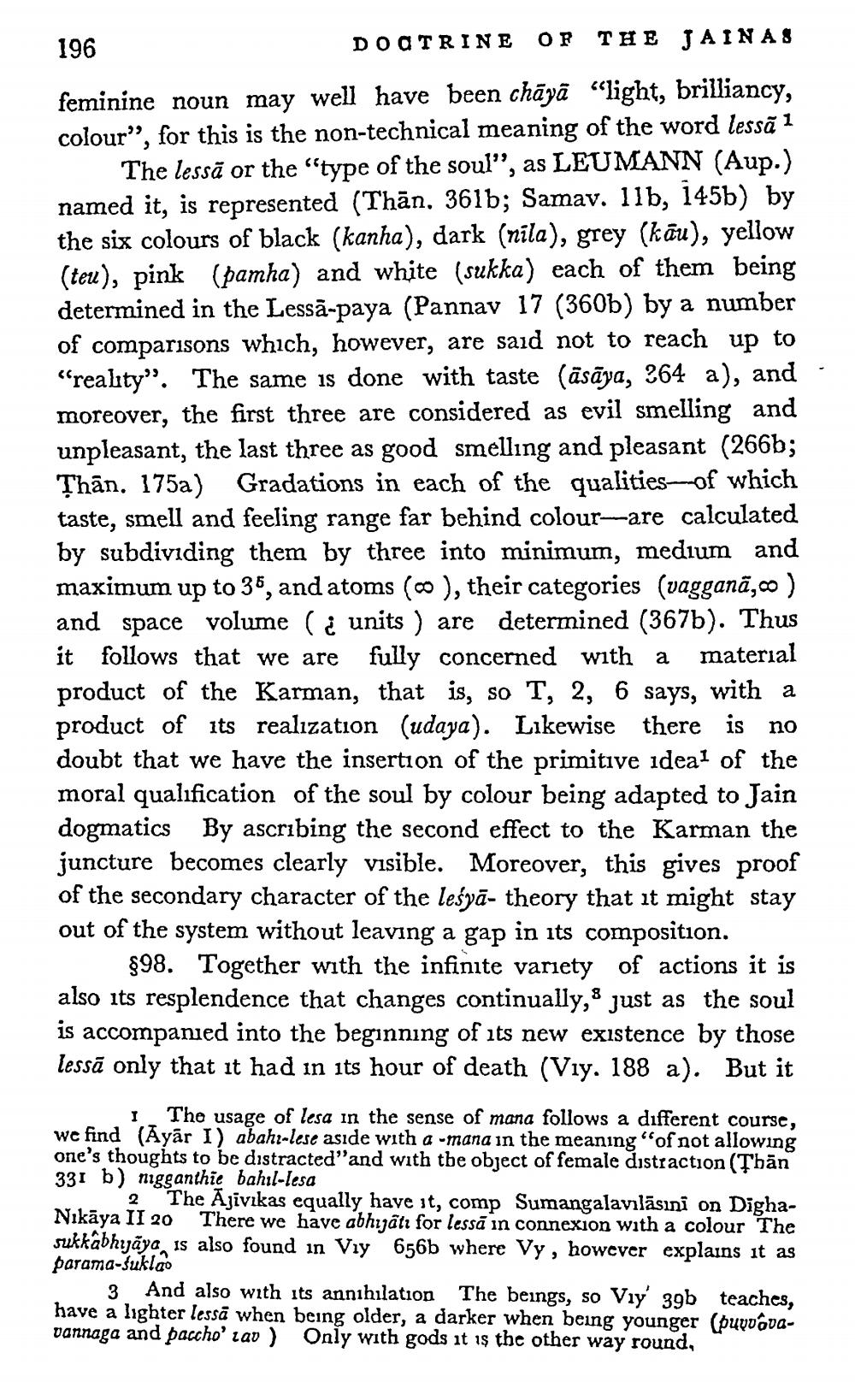________________
196
DOCTRINE OF THE JAIN AS feminine noun may well have been chāyā “light, brilliancy, colour”, for this is the non-technical meaning of the word lessã 1
The lessă or the "type of the soul", as LEUMANN (Aup.) named it, is represented (Thān. 361b; Samav. 11b, 145b) by the six colours of black (kanha), dark (nila), grey (käu), yellow (teu), pink (pamha) and white (sukka) each of them being determined in the Lessā-paya (Pannav 17 (360b) by a number of comparisons which, however, are said not to reach up to “reality". The same is done with taste (āsāya, 364 a), and moreover, the first three are considered as evil smelling and unpleasant, the last three as good smelling and pleasant (266b; Thān. 175a) Gradations in each of the qualities of which taste, smell and feeling range far behind colour-are calculated by subdividing them by three into minimum, medium and maximum up to 35, and atoms (0 ), their categories (vagganā, co ) and space volume ( è units) are determined (367b). Thus it follows that we are fully concerned with a material product of the Karman, that is, so T, 2, 6 says, with a product of its realization (udaya). Likewise there is no doubt that we have the insertion of the primitive ideal of the moral qualification of the soul by colour being adapted to Jain dogmatics By ascribing the second effect to the Karman the juncture becomes clearly visible. Moreover, this gives proof of the secondary character of the leśyā- theory that it might stay out of the system without leaving a gap in its composition.
$98. Together with the infinite variety of actions it is also its resplendence that changes continually, just as the soul is accompanied into the beginning of its new existence by those lessā only that it had in its hour of death (Viy. 188 a). But it
1 The usage of lesa in the sense of mana follows a different course, we find (Ayar I) abahz-lese aside with a-mana in the meaning "of not allowing one's thoughts to be distracted"and with the object of female distraction (Thān 331 b) nigganthie bahil-lesa
2 The Ajivikas equally have it, comp Sumangalavilāsini on DighaNikāya II 20 There we have abhijatr for lessă in connexion with a colour The sukkâbhijāya is also found in Viy 656b where Vy, however explains it as parama-suklao
3 And also with its annihilation The beings, so Vıy' 39b teaches, have a lighter lessä when being older, a darker when being younger (puydovavannaga and paccho'lad ) Only with gods it is the other way round,




